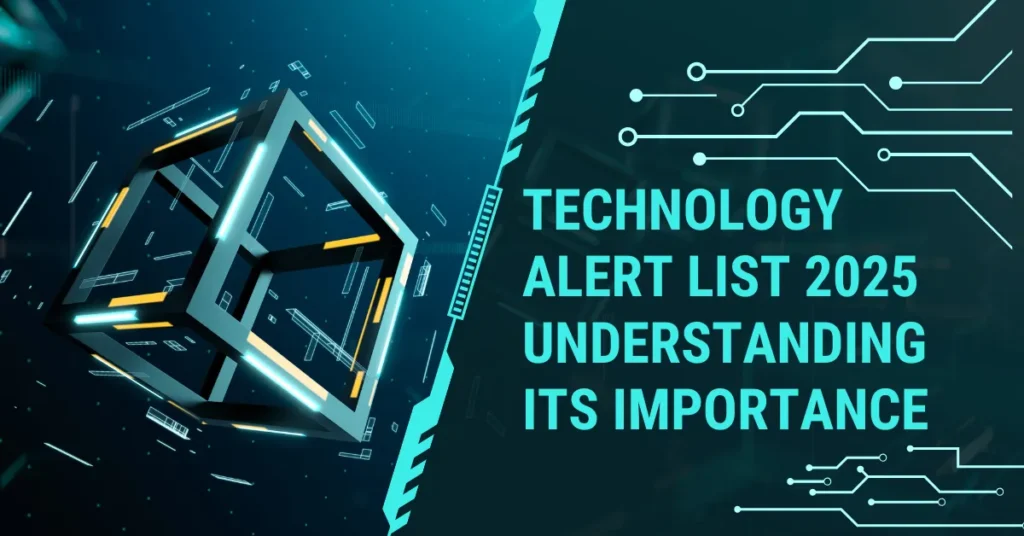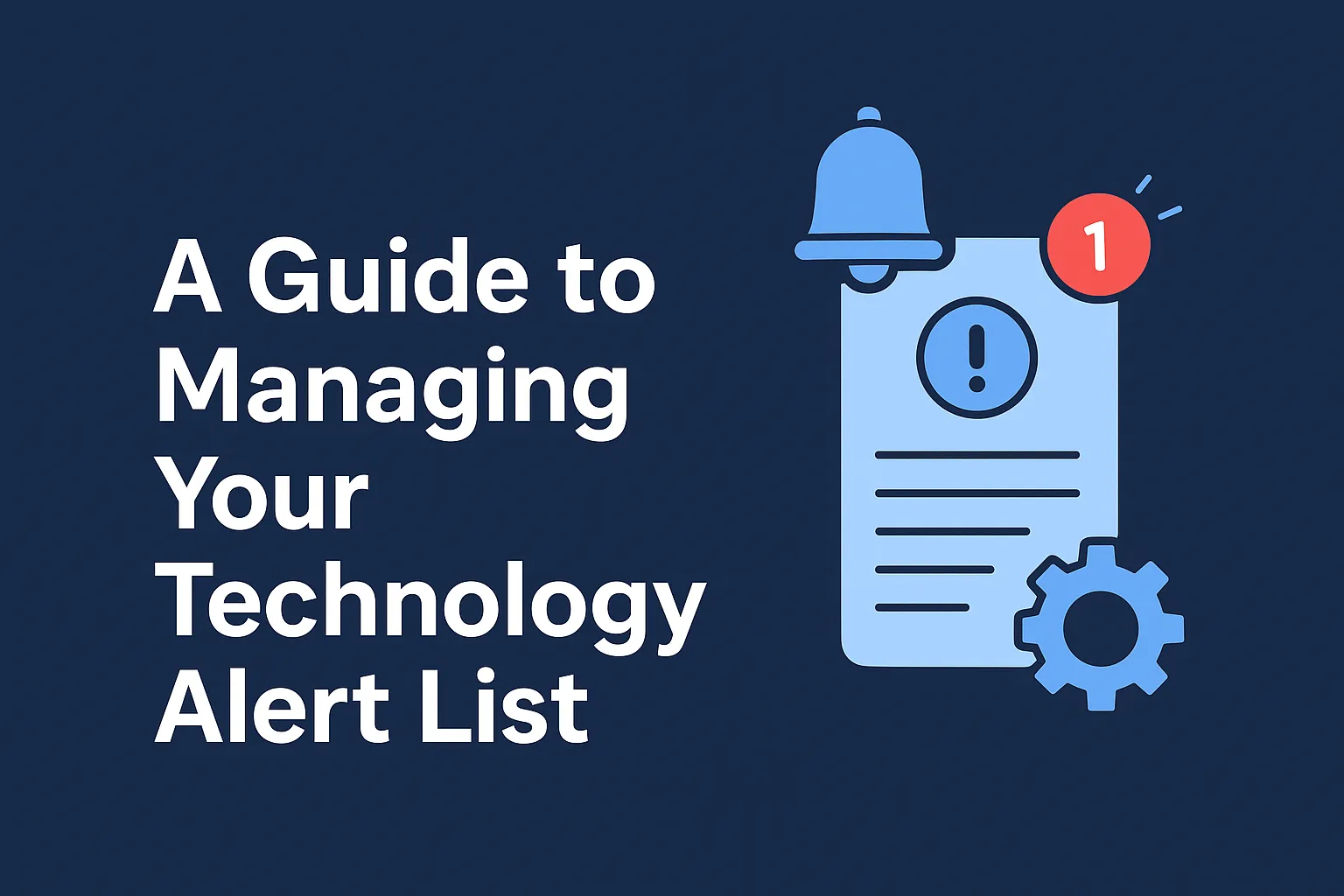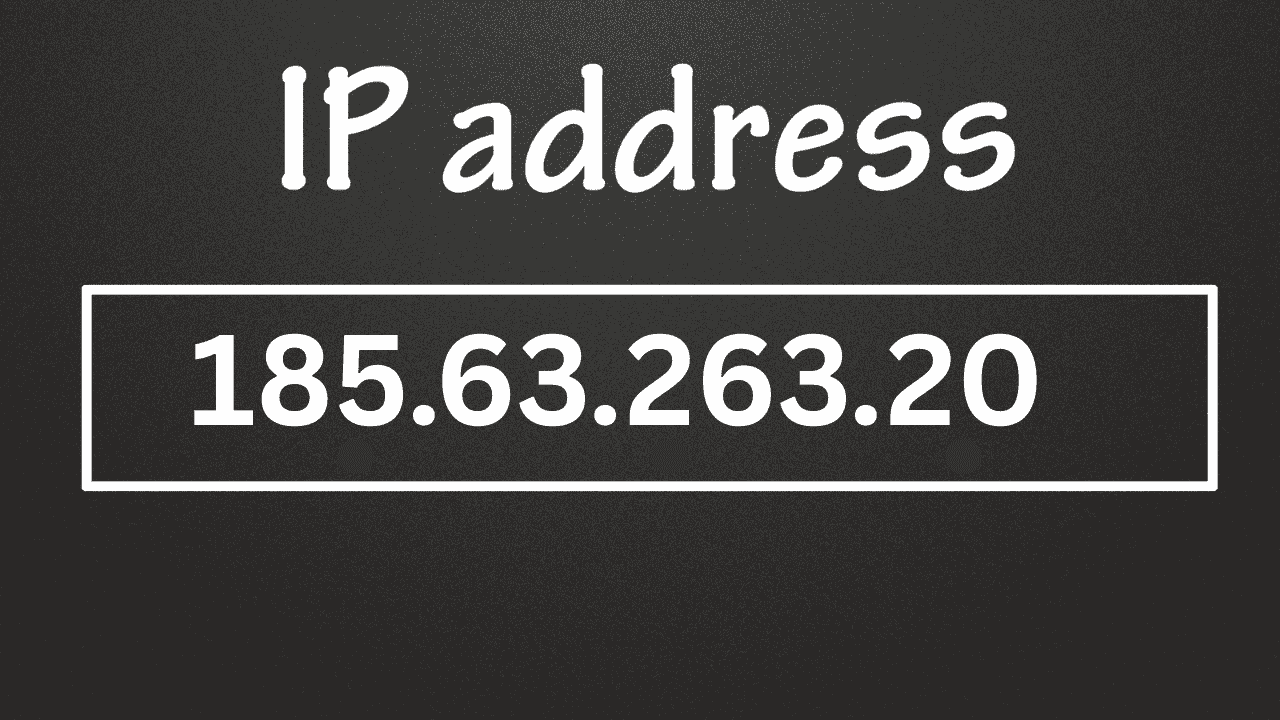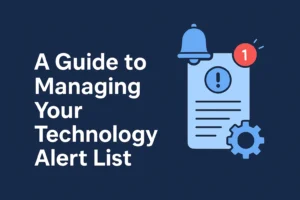Introduction
Technology is evolving at lightning speed, and every day brings new innovations, secudevelopments can feel overwhelming. This is where a Technology Alert List becomes invaluable.
A Technology Alert List acts like your personal radar, keeping you informed about critical updates, security vulnerabilities, and new trends without drowning in unnecessary noise. Whether it’s a major software patch, a cyber threat alert, or the launch of a new device, your alert list ensures you don’t miss the information that matters most.

In this guide, we’ll explore why managing a Technology Alert List is crucial, how to set one up, and strategies to keep it effective. By the end, you’ll know how to turn scattered tech updates into a structured system that drives clarity, security, and efficiency.
- A Guide to Managing Your Technology Alert List
- MyFastBroker Insurance Brokers: Helping You Stay Safe and Covered
- What Is 185.63.263.20? Understanding This Invalid IP Address
- The Hidden Link Between Technology and Sleep Health
- Summer Clover Cheat Engine: Boost Your Gameplay Today!
1. What Exactly is a Technology Alert List?
A Technology Alert List is a personalized system that gathers, organizes, and delivers critical technology updates to you. Instead of endlessly scrolling through tech websites or social media, you can rely on your curated alert list to keep you in the loop.
Typical alerts include:
- Security notifications (patches, vulnerabilities, threats)
- Software updates (new versions, bug fixes, compatibility notes)
- Industry news (AI, cloud computing, IoT, blockchain)
- Product launches (smartphones, wearables, hardware)
- Market insights (trends, reports, forecasts)
Having this information at your fingertips allows you to act quickly and strategically.
2. Why Managing a Technology Alert List is Important
Technology never sleeps, and missing critical updates can lead to serious consequences—especially in cybersecurity. By managing a Technology Alert List, you:
- Stay protected → No more missing urgent security patches.
- Save time → Get only relevant updates, not endless clutter.
- Make better decisions → Act on accurate, timely information.
- Stay competitive → Always be ahead in industry trends.
In short, your alert list becomes a tool for unstoppable growth (Power Keyword), enabling you to remain informed, agile, and future-ready.
3. Setting Clear Goals for Your Alert List
Before creating a Technology Alert List, define what you want from it. Ask yourself:
- Am I focusing on security or general tech news?
- Do I need alerts for personal use or team collaboration?
- Should it focus on specific vendors (Microsoft, Apple, Google)?
Clear goals ensure you filter the right information instead of drowning in irrelevant updates.
4. Choosing Reliable Sources for Alerts
The quality of your Technology Alert List depends on the credibility of your sources. Some trustworthy options include:
- Official vendor blogs (Microsoft, Apple, Cisco, Google Cloud)
- Cybersecurity agencies (CISA, CERT, NCSC)
- Tech publications (TechCrunch, Wired, The Verge)
- Research groups (Gartner, Forrester)
- Professional communities (GitHub, LinkedIn groups)
Pro tip: Always cross-check critical alerts with official sources before acting.
5. Automating Your Technology Alert List
Manually tracking updates is inefficient. Instead, automate your alerts using:
- Google Alerts → keyword-based notifications
- RSS feeds → collect multiple blogs in one place
- Tech newsletters → curated daily or weekly updates
- Slack/Teams integrations → send alerts directly to your workspace
Automation ensures you never miss urgent news while minimizing manual effort.
6. Organizing Alerts into Categories
A messy Technology Alert List can overwhelm rather than help. To stay organized, divide alerts into categories:
- Security Alerts → vulnerabilities, malware, patches
- Software Updates → OS, apps, SaaS platforms
- Hardware & Devices → smartphones, laptops, IoT
- Trends & Innovations → AI, VR, blockchain, robotics
- Business & Market Insights → mergers, investments, new startups
Categorization makes it easier to prioritize information.
7. Filtering Out the Noise
Not every tech update is relevant to you. To manage your Technology Alert List efficiently:
- Use keyword filters (e.g., “Windows security patch” instead of “Windows news”)
- Unsubscribe from irrelevant newsletters
- Assign priority levels (critical, important, general)
- Set a specific time block for reviewing alerts
This ensures you consume only useful updates.
8. Sharing Alerts with Teams and Colleagues
If you manage a business or IT department, your Technology Alert List should not stay personal. Share alerts with your team to ensure everyone is prepared.
Methods include:
- Weekly digest emails
- Shared Trello/Notion boards
- Slack/Teams group alerts
- Internal knowledge bases
Collaboration turns information into actionable strategies.
9. Security Alerts: Your Top Priority
Among all alerts, security alerts should always come first. Cyber threats evolve rapidly, and being unprepared can result in financial and reputational loss.
Your Technology Alert List should highlight:
- Zero-day vulnerabilities
- Critical patches
- Phishing attack trends
- Data breach reports
Responding quickly to these alerts strengthens your cybersecurity posture.
10. Balancing Frequency of Alerts
Too many alerts can be distracting. Decide how often you want updates:
- Real-time alerts → for IT security teams
- Daily summaries → for busy professionals
- Weekly digests → for general tech enthusiasts
Balancing frequency keeps you informed without overwhelming you.

11. Updating Your Technology Alert List Regularly
Technology evolves, so your alert list should evolve too. Review and refine it monthly:
- Remove outdated sources
- Add new trusted outlets
- Adjust filters based on current priorities
- Re-organize categories for clarity
Regular updates keep your list fresh and relevant.
12. Tools to Manage Alerts More Effectively
Here are some powerful tools for organizing your Technology Alert List:
- Feedly → organizes multiple tech blogs in one dashboard
- Google Alerts → keyword-driven updates straight to email
- Zapier/IFTTT → automates workflows (e.g., send alerts to Trello)
- Notion/Trello → structure and visualize your list
- Pocket/Instapaper → save alerts for later reading
The right tools make your alert system smarter and more productive.
13. Turning Alerts into Actionable Insights
A Technology Alert List should not just be about collecting information—it should drive action. Examples:
- Security patch alert → update systems immediately
- AI trend alert → brainstorm applications in your business
- Hardware launch alert → plan upgrade cycles for your company
Turning alerts into action creates measurable value.
14. Common Mistakes to Avoid
When building a Technology Alert List, watch out for:
- Adding too many irrelevant sources
- Ignoring alerts due to overload
- Not acting on critical updates
- Treating it as “just information” instead of strategy
Avoiding these mistakes ensures your list remains purposeful.
15. The Future of Technology Alert Lists
In the future, Technology Alert Lists will become more AI-driven, offering personalized recommendations and predictive insights. Instead of just reacting to updates, AI-powered systems will tell you what’s coming next.
Businesses that adopt these systems early will gain a major competitive edge.
Conclusion
Managing a Technology Alert List is not just about staying updated—it’s about staying prepared. By organizing, filtering, and automating your alerts, you take control of the tech world instead of letting it control you.
From cybersecurity to trend forecasting, a well-managed alert list ensures you’re always ready for change. With proper management, your Technology Alert List becomes more than just a tool—it becomes your roadmap to unstoppable growth.
Start building your list today, refine it regularly, and watch how it transforms your ability to navigate the ever-changing world of technology.







